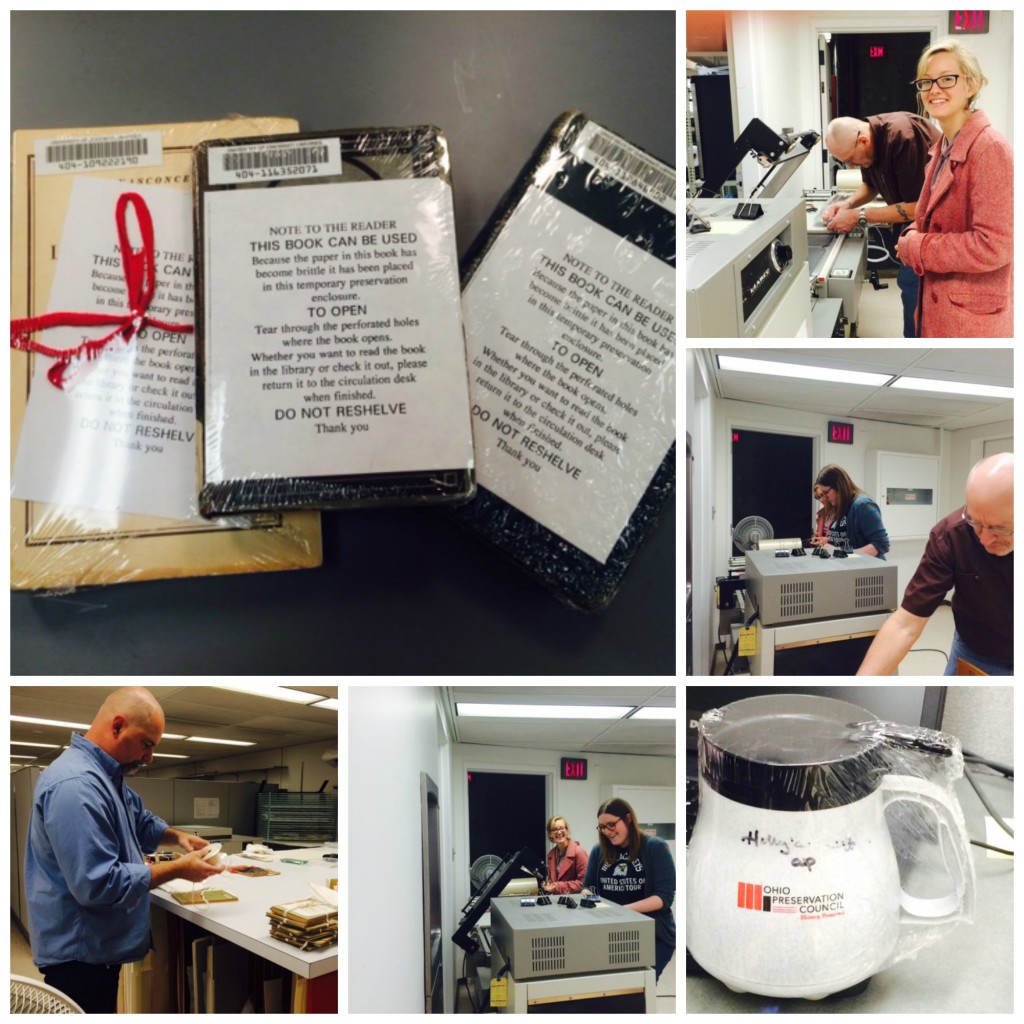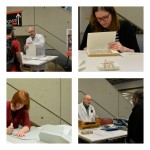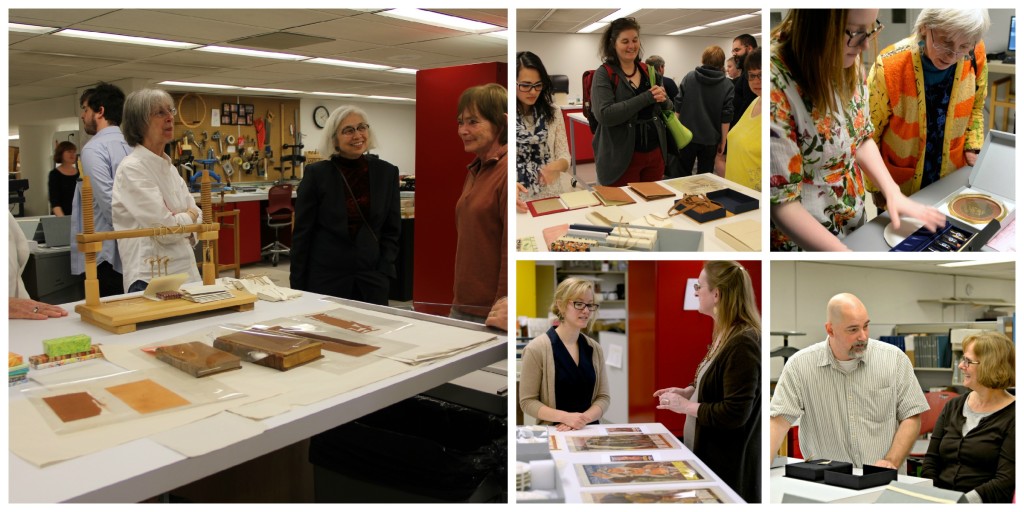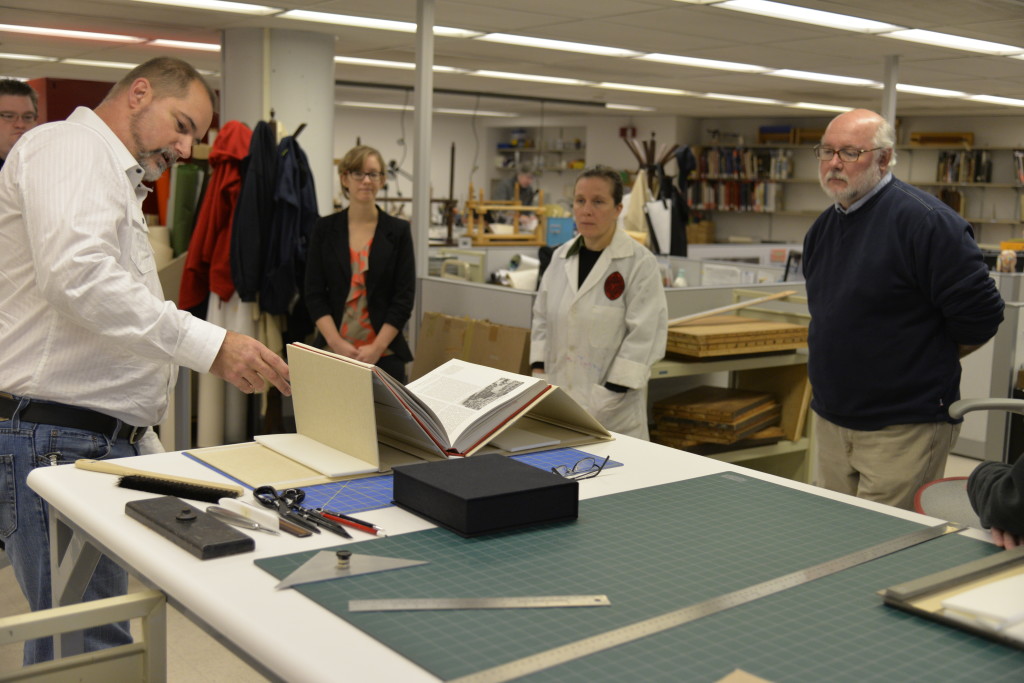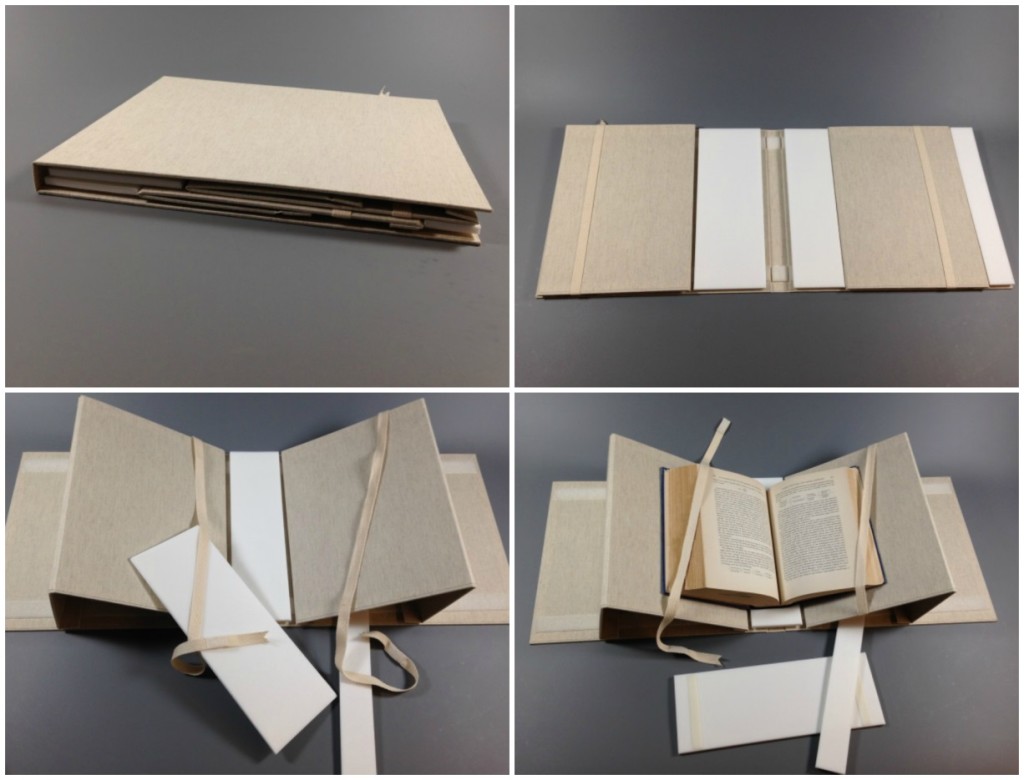Score!
The Public Library of Cincinnati and Hamilton County has recently set a plan in motion to digitize a collection of music scores. But before they can be digitized, the scores need to cataloged at the item level so metadata can be added to the digital files that are uploaded to the Virtual Public Library. But first, they are traveling to the lab to receive stabilization, to improve legibility, and rehousing. There are more than 200 boxes in the collection, each containing fifty or more scores, so this will be an ongoing project for many months to come. Because there are so many, and the Library would like to have them digitized as soon as possible, the decision was made to keep the treatments minimal –enough to stabilize the materials and render them more legible but no more.
…
